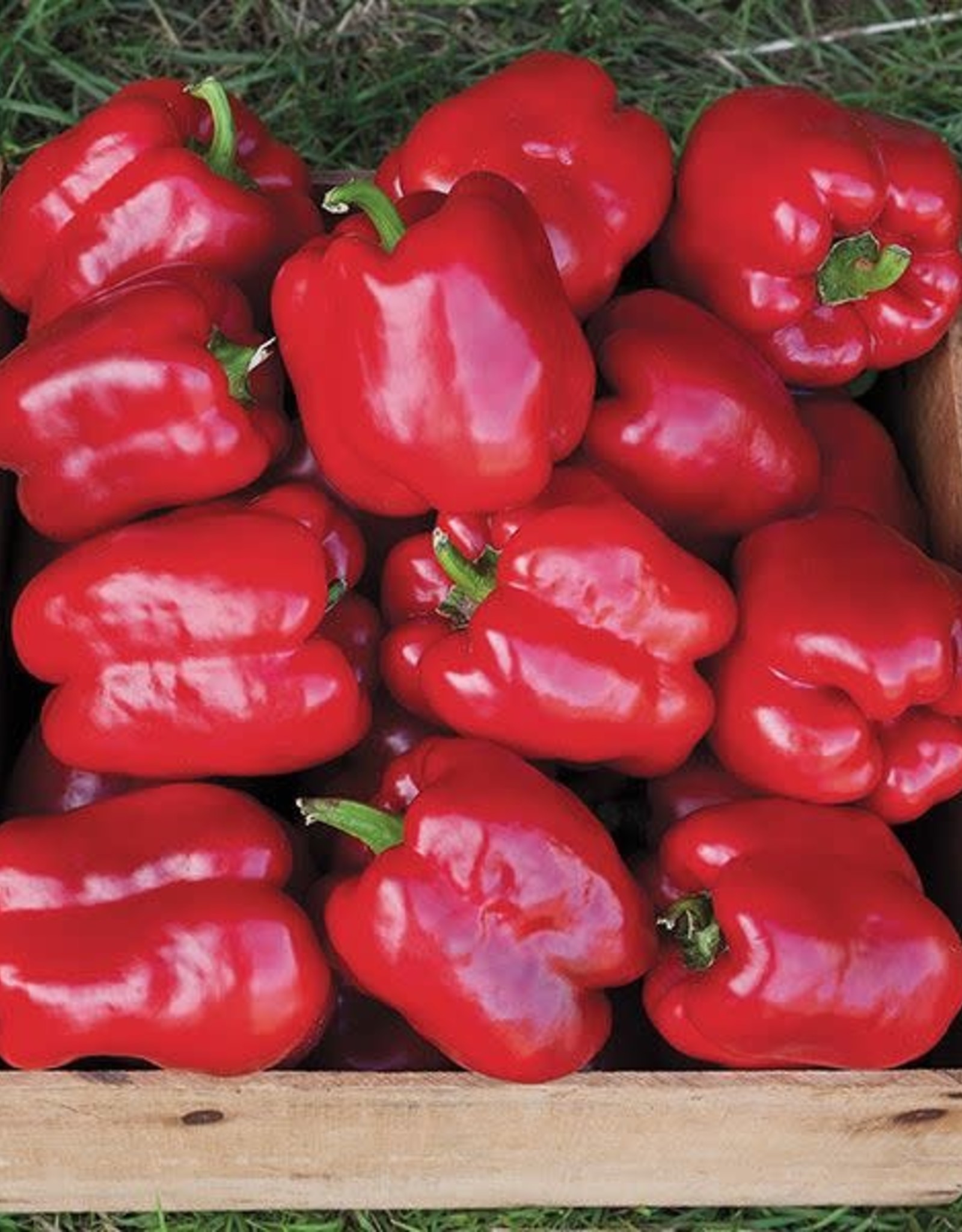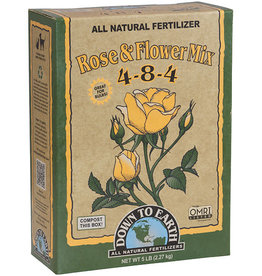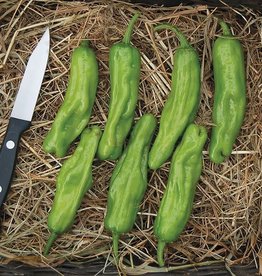HM King of the North Pepper 1/64 OZ
| Availability: | In stock (16) |
Photo and Description Credit - High Mowing Seeds
Reliable set of green to glossy red fruits in short seasons.
Improved for a higher percentage of blocky, thick-walled, early ripening peppers each with three to four lobes. Known for its ability to produce good sized peppers in short, cool seasons. Strong plants support heavy yields.
- Early
- Upright habit
- 3-4" fruits
3,400-4,900 seeds/oz (4M avg). Seeding rate: 670 plants/1000’ (~800 seeds, ~ ¼ oz.), 9,000 plants/acre (~12M seeds, ~ 3 oz.), using 18” spacing, double rows, 18” apart on 6' center beds. M= 1,000, MM=1,000,000
Seeding Rate
670 plants/1000’ 9700 plants/acre (~11M seeds/acre, ~2.75 oz), using 18” spacing, double rows, 18” apart on 6’ center beds. M=1000
Cultural Info
Peppers (Capsicum annuum) are long-season, heat-loving annuals in the Solanaceae family which includes eggplants, tomatoes, tomatillos, potatoes and ground cherries.
- Bells- Oblong lobed fruit that is sweet and red or yellow when ripe, also eaten in the immature green stage.
- Specialty – Long tapering fruits are especially flavorful and sweet, often used as frying peppers but also excellent for fresh eating.
- Hot – Small spicy fruits often have thin walls that make for easy drying. Hot peppers can be used fresh or dried and ground.
Soil Nutrients and Requirements
Peppers prefer light, well drained, moderately fertile soil with pH 6.5-6.8. Use a high phosphorus starter fertilizer when transplanting to give young peppers a good start. Keep nitrogen levels in moderation, as high amounts can reduce yields.
Seeding Depth
1/4”
Plant Spacing
12-18”
Row Spacing
18-36" or double rows 18” apart on 5-6’ centers.
When to Sow
Start transplants 6-8 weeks before planting date. Sow seeds into flat ~4 seeds/inch and then pot up into 2” or larger cells after first set of true leaves appear. Optimal soil temperature for germination is 85°F. For growing transplants, maintain temperature at around 75°F during the day and 65°F at night. Harden off plants by slightly reducing temperature to 60-65°F and reducing water for 2-3 days before transplanting.
Harvest
Harvest first peppers promptly to stimulate further fruit production. Peppers can be harvested and eaten at either unripe (green) or ripe (colored) stage. Colored peppers generally require 2 – 4 weeks longer
Storage
Store peppers at 50° - 54°F and 95% percent relative humidity. Chilling injury occurs at temperatures below 45°F.
Pest Info
- If plants are flowering but fail to set fruit, the culprit (at least in northern regions) is likely to be the tarnished plant bug, which particularly appreciates the sap of eggplant and pepper flowers. Consider planting under row covers, or where this is impractical, a spray containing several deterrents, such as Beauveria bassiana (such as Naturalis™, see Supplies), pyrethrin, neem oil, and/or an insecticidal soap (such as Safer Brand™) may be effective
Disease Info
- Peppers are commonly subject to bacterial spot (Xanthomonas campestris pv. vesicatoria) manifesting as leaf lesions that turn dark brown to black with a central tan area. Affected leaves eventually drop off. Fruit spots are brown to black with a warty appearance. The disease persists on plant residue and seed, so practice strict sanitation and purchase only disease-free seed. Copper fungicides can be moderately effective, but for isolated outbreaks, it is best to pull up infected plants immediately and destroy.
- The several viruses that affect peppers can be difficult to distinguish from one another but should all be treated similarly: pull up infected plants immediately to prevent spread.
- In soils containing the verticillium wilt fungi (Verticillium alboatrum and Verticillium dahliae), practice long crop rotations to reduce severity of the disease.




